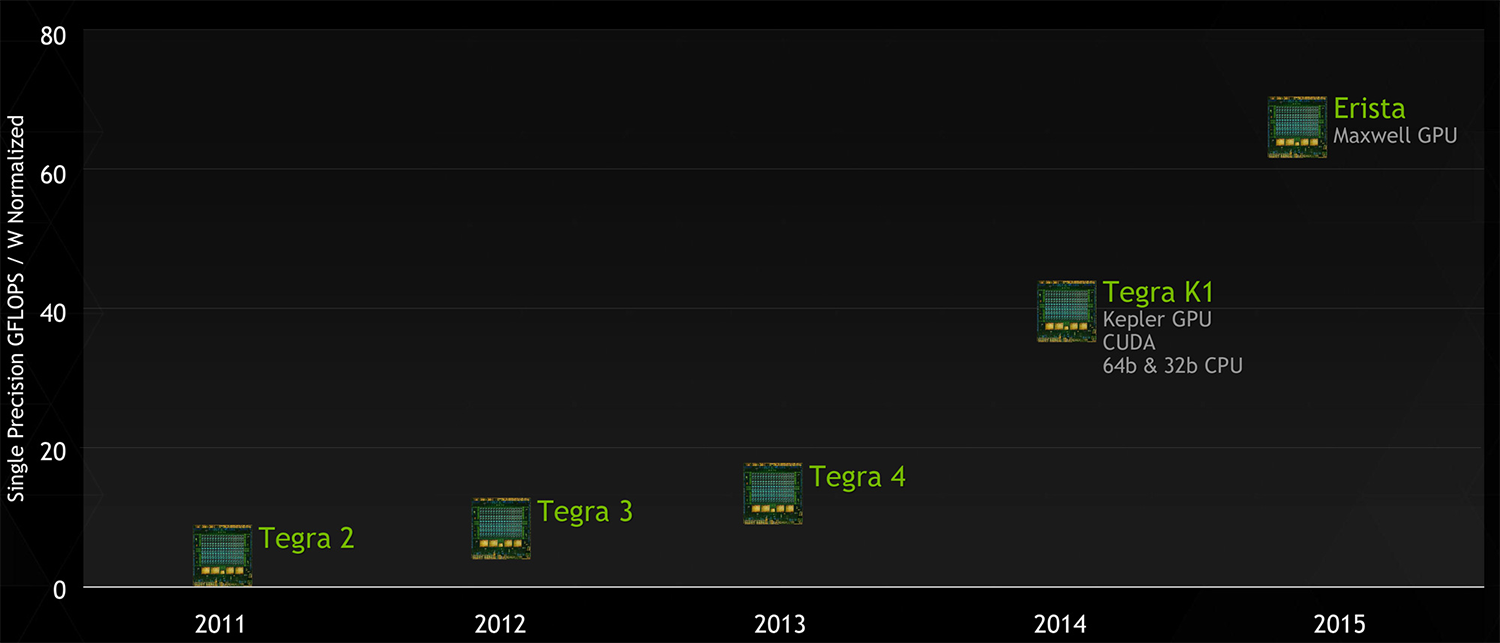For many years Intel Corp.’s “tick-tock” strategy has been a perfect example of firm execution, wise innovation and timely product-launches. In the recent years the “tick-tock” cadence essentially broke down, but the method of step-by-step innovation in different directions have been inherited by other companies. For example, Nvidia has its own strategy called “ping-pong”.
Nvidia’s Tegra evolution has always been pretty archaic. The company used a variety of architectures for general-purpose and graphics processing cores as well as different process technologies, which prevented Nvidia from re-using IP [intellectual property] designed for its standalone graphics processing units in its Tegra chips. The evolution of Tegra was not predictable, something that is not good, given the company’s new focus on automotive industry. But that is going to change.

In an interview at Computex last month Jen-Hsun Huang, chief executive officer and chairman of Nvidia, revealed that in the recent years the company adopted an all-new “ping-pong” strategy, which has some similarities with Intel’s “tick-tock”, reports Expreview.
In accordance with the “ping-pong” strategy, the top-to-bottom evolution of each Tegra system-on-chip will take two-years. For example, the company may change CPU architecture and fabrication technology, but retain graphics architecture. Or switch GPU type as well as manufacturing process, but retain general-purpose core architecture. However, if Nvidia introduces a Tegra chip, in two years the company will launch a new SoC with made using a new process tech and featuring different CPU and GPU engines.
For example, Nvidia’s code-named “Parker” system-on-chip due next year will feature the company’s improved “Denver” general-purpose cores and will be made using an all-new fabrication process featuring FinFET transistors. However, the chip will continue to use “Maxwell”-based graphics processing unit.
Improved predictability of Nvidia’s Tegra SoC roadmap will help software developers to better tune their applications for the chips. Keeping in mind that process technologies change every 18 – 24 months, it is logical to expect significant performance leaps of Nvidia Tegra every 1.5 – 2 years. Given the cadence of Nvidia GPU architecture innovation, expect Tegras to employ all-new GPUs every two years as well. Unfortunately, since Nvidia seems to have plans to continue using both off-the-shelf ARM Cortex and its own custom ARM-compatible general-purpose cores going forward, programmers will have to optimize their applications for two types of cores.
Discuss on our Facebook page, HERE.
KitGuru Says: While Nvidia no longer addresses smartphones and tablets with its Tegra chips, it still needs to offer predictability to customers in new segments. Apparently, “ping-pong” is designed to provide it. The biggest problems right now seem to be general-purpose cores. Development cycle of CPU cores at Nvidia does not seem to be aligned with development cycle of GPU architectures. As a result, the future of Tegra does not seem to be absolutely clear, at least from where we stand.
 KitGuru KitGuru.net – Tech News | Hardware News | Hardware Reviews | IOS | Mobile | Gaming | Graphics Cards
KitGuru KitGuru.net – Tech News | Hardware News | Hardware Reviews | IOS | Mobile | Gaming | Graphics Cards




First Few Days To Get Smart Deal with kitguru…. < Find Here
< ??????.+ zeldadungeon+ *********<-Part-time working I Saw at the draft which said $19958@mk11 < Now Go Read More
<???????????????????????????????
36